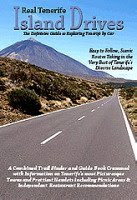Yesterday someone left a flyer for the Tasca La Marquesa restaurant under the windscreen wiper of my car. It sounds great. There’s a decent selection of tapas including chipirones (€2.50) and gambas al ajillo (€3.90); the set menu of three courses is only €7.90; a bottle of dorada is €1.20 and spirits with a mixer are €3; there’s even live music.
The only problem is I hadn’t a clue where it was. I scoured the flyer, but they omitted to include an address. There was a little street map with a big arrow pointing to the restaurant, but apart from the church and post office being shown there was nothing to identify its actual location.
Initially I thought that the restaurant was in Puerto de la Cruz. That’s where I picked up the flyer, so that assumption seemed reasonable, except that the position of the post office in relation to the church on the map made that impossible. I was baffled.
You might think that this was just an oversight, but it happens all the time. There is advert after advert on Canarian TV showing great looking food being served in atmospheric restaurants…but half of the time they fail to tell you where. I’ve seen numerous posters advertising bands, concerts, exhibitions and all sorts of things; the posters are packed with loads of juicy info, except the location of the event.
It seems basic common sense to me to include an address in publicity material, but sometimes it seems that’s a concept which hasn’t quite caught on here. There’s almost an assumption that everybody knows where everything is and what’s happening. It’s one of the reasons we’ve included a fiesta guide in Going Native in Tenerife with tips about where, when and what to expect. We missed lots of fiestas when we first moved here due to a lack of detailed information. Now we generally know what’s happening and when, but only because we’ve been and seen it for ourselves.
It’s a bizarre little characteristic which can make life frustrating for visitors and even ex-pat residents.
I eventually worked out the restaurant’s location, but only because I know the town well enough to have been able figure it out; it’s in La Orotava…I think.
Say Halo Halo Halo For Saintly Memories
7 months ago





